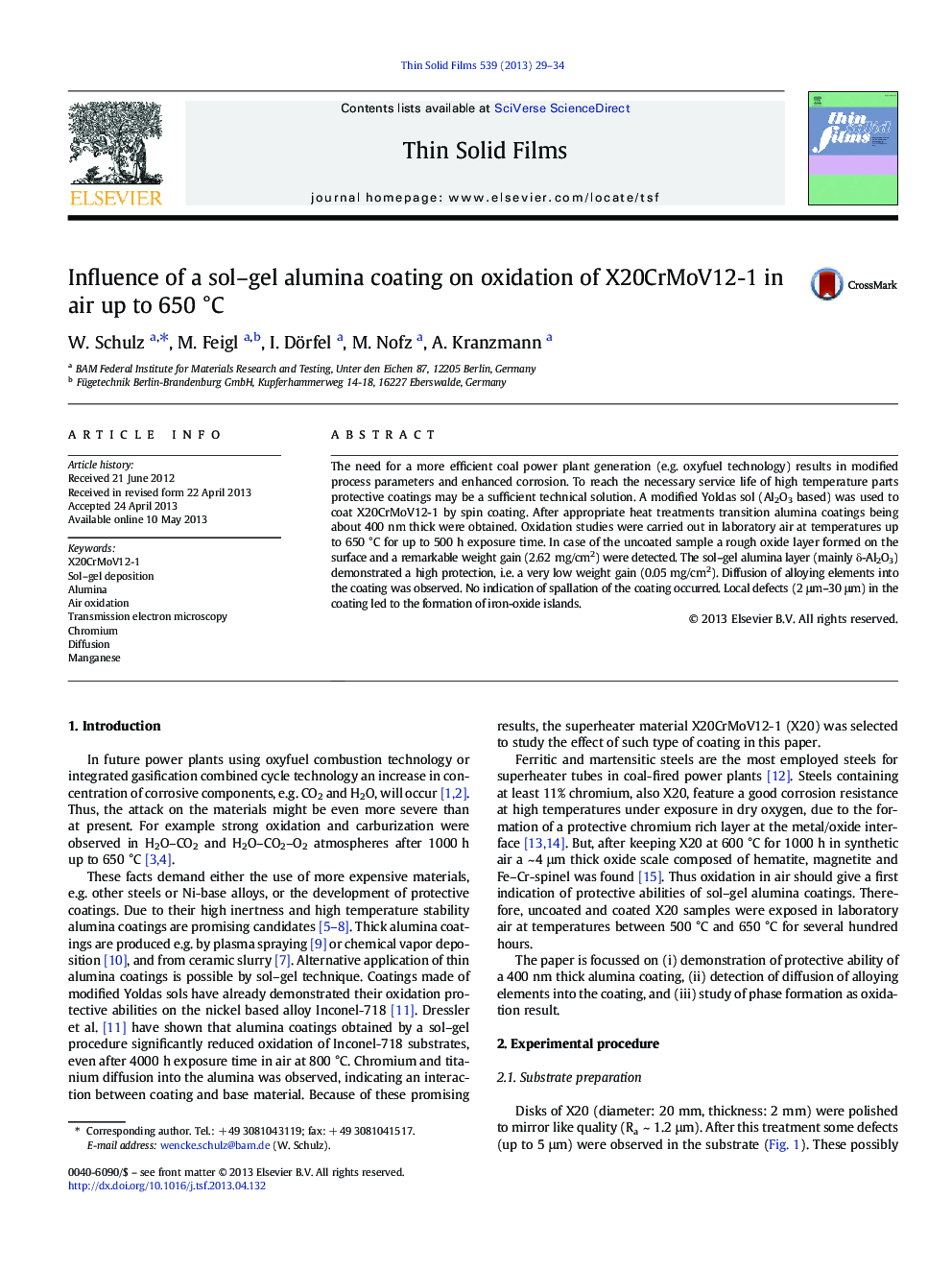| Article ID | Journal | Published Year | Pages | File Type |
|---|---|---|---|---|
| 1666343 | Thin Solid Films | 2013 | 6 Pages |
•Power plant steel X20 was coated with alumina by sol–gel method.•A 400 nm alumina layer provides good protection up to 650 °C.•Cr and Mn diffusion into Al2O3 supports coating adhesion and protective ability.•Improvement of the coating process must be directed to avoidance of local defects.
The need for a more efficient coal power plant generation (e.g. oxyfuel technology) results in modified process parameters and enhanced corrosion. To reach the necessary service life of high temperature parts protective coatings may be a sufficient technical solution. A modified Yoldas sol (Al2O3 based) was used to coat X20CrMoV12-1 by spin coating. After appropriate heat treatments transition alumina coatings being about 400 nm thick were obtained. Oxidation studies were carried out in laboratory air at temperatures up to 650 °C for up to 500 h exposure time. In case of the uncoated sample a rough oxide layer formed on the surface and a remarkable weight gain (2.62 mg/cm2) were detected. The sol–gel alumina layer (mainly δ-Al2O3) demonstrated a high protection, i.e. a very low weight gain (0.05 mg/cm2). Diffusion of alloying elements into the coating was observed. No indication of spallation of the coating occurred. Local defects (2 μm–30 μm) in the coating led to the formation of iron-oxide islands.
